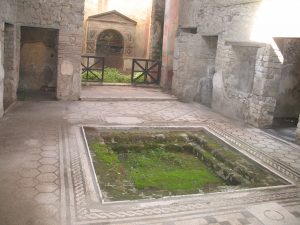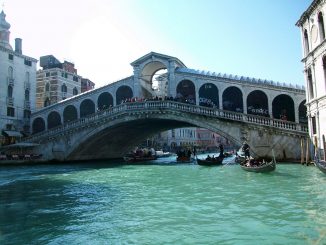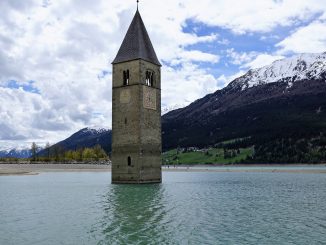
 The city of Pompeii was once a bustling city on a hill just across from the modern city of Naples. Along with Herculaneum and many small villages in the surrounding area, Pompeii was destroyed by Mt Vesuvius on the 24th of August in 79AD. Buried under 13-20 feet (4-6m) of volcanic ash and pumice, Pompeii was so quickly covered that it was incredibly well preserved. The eruption destroyed the city, killing thousands of its inhabitants and burying it under tons of ash. For almost 1,500 years Pompeii was undiscovered and because there was.
The city of Pompeii was once a bustling city on a hill just across from the modern city of Naples. Along with Herculaneum and many small villages in the surrounding area, Pompeii was destroyed by Mt Vesuvius on the 24th of August in 79AD. Buried under 13-20 feet (4-6m) of volcanic ash and pumice, Pompeii was so quickly covered that it was incredibly well preserved. The eruption destroyed the city, killing thousands of its inhabitants and burying it under tons of ash. For almost 1,500 years Pompeii was undiscovered and because there was.
Believed to have been founded in the late sixth or early seventh century BC by the Oscans, Greeks settled in the area in the eighth century BC, and the region attracted wealthy vacationers interested in soaking up the sun and seeing the sights. Pompeii did not become a domination of Rome till the fourth century BC, and it was not till 80 BC that it became a Roman colony. After a short 160 years, with a population of between 11,000-15,000 it was a thriving city with water systems, an amphitheater, gymnasium, and a highly valuable port.
Rediscovered in 1748 by Spanish engineer Rocque Juaquin de Alcubierre, the objects covered by ash were remarkably well preserved. Thanks to the lack of air and moisture, these artifacts have been able to provide detailed insights into the life of an ancient city. During the excavation, plaster was used to fill voids in the ash layers that once held human bodies. These plaster casts have allowed archaeologists to see the exact position people were in when the perished.
While excavation of the site has given the world innumerable value, weathering began almost as soon as the site was uncovered. Subject to natural and man-made forces, Pompeii is rapidly weathering and it is thought that further protection may have to be instituted by UNESCO to protect the site for future generations.
A popular tourist destination for more than 250 years and one of the most popular sights in all of Italy, Pompeii was declared a World Heritage Site by UNESCO in 1997. Vesuvius National Park includes Herculaneum, Pompeii, and many smaller sites covered by the ash of Mt Vesuvius.
Pompeii Facts
- Of an estimated population of 15,000 people, almost 2,000 died during the eruption of Mt Vesuvius.
- The people of Pompeii didn’t even know Mt Vesuvius was a volcano since it hadn’t erupted in almost 2,000 years.
- The rich volcanic soil of previous eruptions of Mt Vesuvius ironically made the site perfect for farming.
- Mount Vesuvius is the only active volcano on mainland Europe and is considered one of the most dangerous volcanoes in the world.
- Mt Vesuvius erupted just after noon on the 24th of august in 79 AD, completely destroying the city.
- The eruption of Mt Vesuvius that destroyed Pompeii is estimated to have lasted more than 24 hours.
- The remains of the city were not discovered till 1748.
- The Catastrophic eruption on the 24th, August 79 AD was said to have lasted more than 24 hours.
- The ruins of Pompeii are visited by more than 2.5 million people each year.
- The Amphitheatre of Pompeii, built in 80 BC is the oldest stone building of its kind known to mankind.
- Because of deterioration, Pompeii was included in the 1996 World Monuments Watch by the World Monuments Fund.
- Pompeii was a place where mostly wealthy people lived and Nero, the Roman Emperor had a holiday home near Pompeii. Nero’s wife Poppaea Sabina was a native on Pompeii.
Travel Tips
- Use a licensed guide. There will be lots of people claiming to be the best just about everywhere you look. The licensed guides will have the best and most accurate information, and they will not be as likely to overcharge for the experience.
- Use the restroom before you go. There are not many (if any) restrooms within the ruins of Pompeii. There is a chance that you will cut your tour short if you drink too much water.
- Drink lots of water. Even though it may cut your tour early (for lack of a restroom), it can get hot in the summer and dehydration is a serious vacation destroyer.
- Take comfortable shoes. Pompeii is most likely going to be bigger than you think it is. Spending 3-4 hours walking around will still leave you with lots haven’t seen.
- Assume anything you see costs money. There are maps and information packets in the visitors center and they almost always cost.
- Take the train. There are taxi cabs that will offer to get you there faster and cheaper than the train. While it may be faster in the morning, it will not be in the afternoon or evening, and it will never be cheaper. The train is also extraordinarily easy to buy tickets for and use.
- If you see someone dressed in period costumes it will cost a little money to take your picture with them. For that matter, it will cost a little money to take a picture of them.


